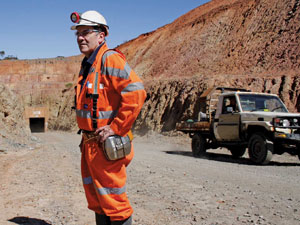 |
| Image source :ACT government |
June 29, 2012
Appliance energy ratings get the standard treatment
New Place Based Income Management to commence 1 July
| Image: Bankstown Railway Station (Wikimedia Commons) |
So, how will the new Place Based Income Management operate and how does it differ from existing forms? Why base it in particular areas? What do we know about whether or not it is likely to be successful?
June 28, 2012
Update on statistics for boat arrivals
The Parliamentary Library produces a number of publications about asylum seekers and immigration. The publication, Boat arrivals in Australia since 1976 provides a brief overview of the historical and political context surrounding boat arrivals in Australia. An update of the statistical appendix on boat arrival figures is provided below. Please note that the publication has not yet been formally updated.
June 27, 2012
Trafficking in Persons - Special Rapporteur's Report to the Human Rights Council
 On 22 June, Joy Ngozi Ezeilo, the Special Rapporteur on Trafficking in Persons especially women and children, presented her annual report to the United Nations Human Rights Council, including reports of her missions to Thailand and Australia.
On 22 June, Joy Ngozi Ezeilo, the Special Rapporteur on Trafficking in Persons especially women and children, presented her annual report to the United Nations Human Rights Council, including reports of her missions to Thailand and Australia.Special Rapporteurs are independent experts appointed by the United Nations Human Rights Council (formerly the Commission on Human Rights) to investigate, monitor, and advise on human rights violations – world wide or in specific countries. In carrying out her mandate, the Special Rapporteur undertakes country visits to study the situation on the ground and, develop recommendations to better prevent or combat trafficking and protect the human rights of its victims; and takes action on complaints about human rights violations against trafficked persons.
June 26, 2012
Australia's tertiary students - the latest snapshot
The National Centre for Vocational Education Research (NCVER) has just released Tertiary Education and Training 2010, an annual publication that compares vocational education and training (VET) and higher education on a range of key measures.
It draws on data from the National VET Provider Collection and the Higher Education Statistics Collection.
It draws on data from the National VET Provider Collection and the Higher Education Statistics Collection.
June 22, 2012
How's it going? Australia's Health 2012
The thirteenth report on Australia's health was released by the Australian Institute of Health and Welfare (AIHW) on 21 June 2012. The AIHW describes Australia's Health 2012 as 'the most comprehensive and authoritative source of national information on health in Australia', and many would not disagree. Produced biennially since 1988, the report has grown both in size and stature as a reliable report card on the status of the country's health and the services and resources that deliver and support it. A companion In brief publication was also released.
 |
| Source: AIHW |
Labels:
health
Is $325 million enough for Tasmania's health care system?
Last week, after much speculation, the Federal Government announced that it would provide an extra $325 million over four years to Tasmania’s health care system. Previously the Tasmanian Government had announced cuts of up to $500 million over four years to the health care system, commencing from 1 July 2011. Many of these cuts were directed to elective surgery, reduced services and the closure of hospital beds. The most recent Tasmanian budget (May 2012) announced a reduction of the savings target by $120 million.
 |
| Image source: www.yourhealth.gov.au |
2011 Census release
 |
| Image Source: http://www.abs.gov.au/ |
Australia’s migrant population is growing and changing
In the decade to 2011, the proportion of the population who were born overseas increased from 27.4% to 30.2%.
Over the same period, the proportion of Australians with at least one parent born overseas increased from 42.7% to 46.3%
There was a shift away from Europe and towards Asia.
- The number born in India more than trebled, from 95 452 in 2001 to 295 362 in 2011.
- The number born in China (excludes SARs and Taiwan) more than doubled from 142 780 to 318 969.
June 21, 2012
Income management: some answers to key questions
 |
| Image: BasicsCard kiosk, (Centrelink) |
While the policy of income management of welfare payments has been highly controversial, the specific details of its various forms are not generally well understood.
The Parliamentary Library has released a Background Note seeking to address this lack of understanding. It provides a brief overview of the history of income management and responses to a number of key questions about the policy.
June 19, 2012
New marine reserve proposals
 |
| Image source: Wikimedia Commons |
June 15, 2012
Hearing impairment—the silent barrier to Closing the Gap
 |
| Image source: Northern Territory Government |
Dissecting the growth of vocational education and training in Victoria
 |
| Image source: Victorian Government |
Amid this debate, the National Centre for Vocational Education Research (NCVER) has released preliminary Students and Courses data for 2011. The full publication (due in July) provides data on the numbers of students, subject enrolments, hours of delivery and qualifications in Australia’s public vocational education and training (VET) system.
The preliminary data reveals some interesting results for one state in particular: Victoria.
The deeper worries about coal seam gas
 |
| Image source: WikiMedia Commons |
Labels:
coal seam gas,
energy,
mining
People trafficking, forced marriage and slavery offences
The Crimes Legislation Amendments (Slavery, Slavery-like Conditions and People Trafficking) Bill 2012 was introduced into the House of Representatives on 30 May 2012. This Flagpost is a skeleton of a larger project.
If passed in its current form, this Bill will:
If passed in its current form, this Bill will:
- expand the definition of slavery to include physical and psychological threats, coercion and deception
- expand the servitude and exploitation offences to not be limited to sexual servitude
- create new offences for aggravated slavery-like offences.
- create new offences for forced marriage
- create new offences for harbouring or receiving a trafficking or slavery victim
- increase the penalties for debt bondage offences
World Refugee Day
 |
| Image source: http://www.unhcr.org/ |
June 13, 2012
Burma's economy—the long road ahead
 |
| Image source: Wikimedia Commons |
June 12, 2012
110th anniversary of the Commonwealth Franchise Act 1902
 |
| Image source: Wikimedia Commons |
June 4, 2012
Astronomical events
 |
| Image source: WA Department of Commerce via myregion.gov.au |
On 6th June 2012, just before 8:30 am along the east coast of Australia, the tiny dot of the planet Venus will again pass slowly across the face of the Sun, as seen from Earth. Such ‘Transits of Venus’ are infrequent events; the next transit does not occur until 2117 so this is one for us to savour. Many smaller observatories here will be trained on this solar event.
A labour market for the resources sector – what are Enterprise Migration Agreements?
 |
| Image source: Western Australia Department of Mines and Petroleum |
The Immigration Minister’s recent announcement that an Enterprise Migration Agreement (EMA), facilitating the recruitment of temporary overseas workers, had been granted to the Roy Hill project in the Pilbara appears to have taken many observers by surprise. It shouldn’t have.
June 1, 2012
New unit to lower health insurance premiums and improve competition
 |
| Image: Private Health Insurance Administration Council |
Labels:
private health insurance
Subscribe to:
Posts (Atom)
